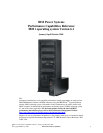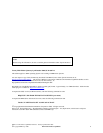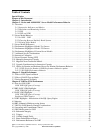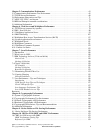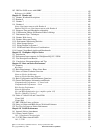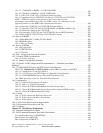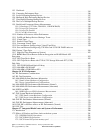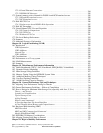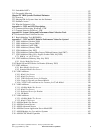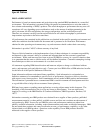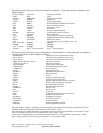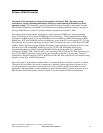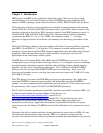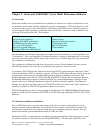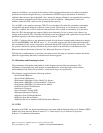327Chapter 21. High Availability Performance ...........................................
325
20.6 Aligning Floating Point Data on Power6
...........................................
324
20.5 POWER6 520 Memory Considerations
............................................
323
Models With/Without HMT
.......................................................
323
HMT and SMT Compared and Contrasted
...........................................
322
HMT Described
...............................................................
322
20.4 Hardware Multi-threading (HMT)
................................................
321
A Final Thought About Memory and Competitiveness
..................................
321
A Short but Important Tip about Data Base
..........................................
320
Which is more important?
.......................................................
319
A Brief Example
...............................................................
318
Typical Storage Costs
...........................................................
318
System Level Considerations
.....................................................
317
Theory -- and Practice
..........................................................
317
20.3 How to Design for Minimum Main Storage Use (especially with Java, C, C++)
.............
316
20.2 General Performance Guidelines -- Effects of Compilation
.............................
314
20.1 Adjusting Your Performance Tuning for Threads
....................................
314Chapter 20. General Performance Tips and Techniques ...............................
311
19.7 AS/400 NetFinity Capacity Planning
..............................................
310
19.6 User Pool Faulting Guidelines
...................................................
308
19.5 Additional Memory Tuning Techniques
...........................................
307
19.4 Memory Tuning Using the QPFRADJ System Value
.................................
307
19.3 Main Storage Sizing Guidelines
.................................................
304
19.2 Dynamic Priority Scheduling
....................................................
302
19.1 Public Benchmarks (TPC-C, SAP, NotesBench, SPECjbb2000, VolanoMark)
.............
302Chapter 19. Miscellaneous Performance Information ..................................
301
18.5 Summary
....................................................................
300
18.4 LPAR Measurements
..........................................................
297
18.3 Performance on a 12-way system
.................................................
296
18.2 Considerations
................................................................
296
V5R1 Additions
................................................................
295
General Tips
..................................................................
295
V5R2 Additions
................................................................
295
V5R3 Information
..............................................................
295
18.1 Introduction
..................................................................
295Chapter 18. Logical Partitioning (LPAR) ............................................
293
17.9 Additional Sources of Information
................................................
293
17.8 Summary
....................................................................
292
17.7 File Level Backup Performance
..................................................
291
17.6.3 Windows CPU Cost
.......................................................
291
17.6.2 VE CPW Cost
...........................................................
290
17.6.1 VE Capacity Comparisons
.................................................
289
17.6 Virtual Ethernet CPU Cost and Capacities
..........................................
288
17.5 Disk I/O Throughput
...........................................................
287
17.4.1 Further notes about IXS/IXA Disk Operations
..................................
286
17.4 Disk I/O CPU Cost
............................................................
285
17.3.2 iSCSI attached servers:
....................................................
285
17.3.1 IXS and IXA attached servers:
...............................................
285
17.3 System i memory rules of thumb for IXS/IXA and iSCSI attached servers.
................
285
17.2.5 IXS/IXA IOP Resource:
...................................................
284
17.2.4 Virtual Ethernet Connections:
..............................................
IBM i 6.1 Performance Capabilities Reference - January/April/October 2008
© Copyright IBM Corp. 2008 IBM i Performance Capabilities 8



